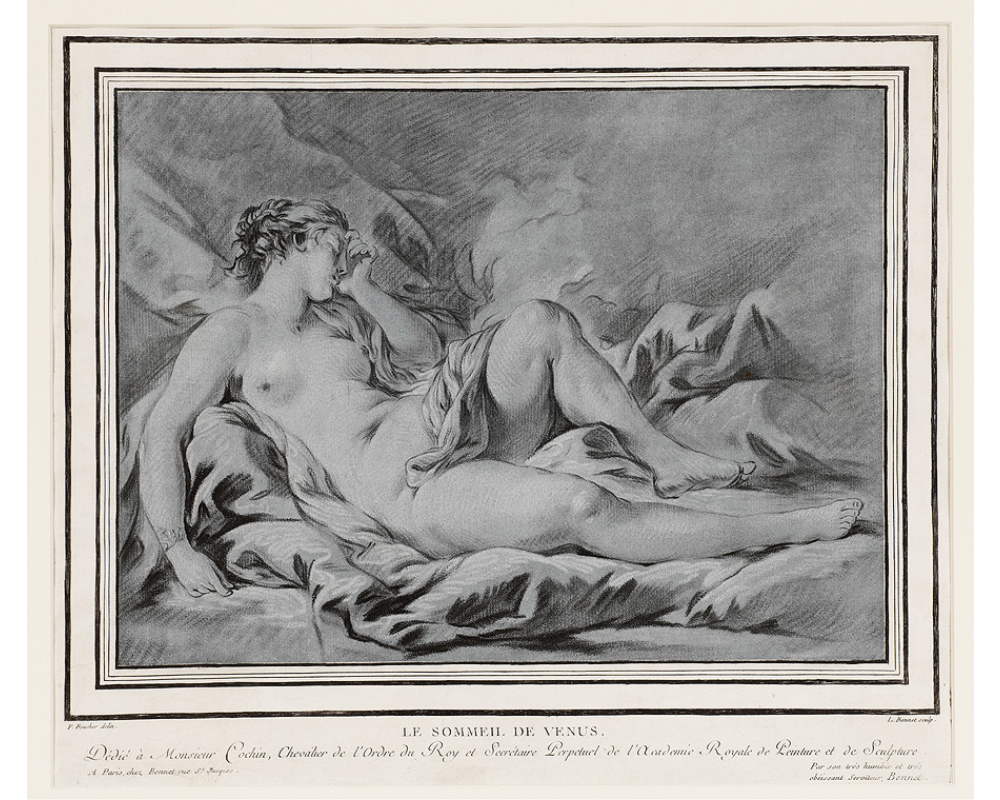
The Academic French Nude
Henriette Kets de Vries is the Cunningham Center Manager and the Assistant Curator of Prints, Drawings and Photographs.
The Smith College Museum of Art is dedicated to bringing out works on paper into the main galleries, where all visitors can see them. Since works on paper are more sensitive to light than other mediums, SCMA has installed special Works on Paper cabinets throughout the galleries for the display of prints, drawings and photographs. Today’s post is part of a series about the current installations of the Works on Paper cabinets, which will remain on view through August 2016.
Representations of the nude in Western Art have a long history rooted in Ancient Greek culture, in which the athletic nude body was idealized. The nude body within the context of sport or warfare stood for honor, glory and moral superiority. The Greek athletes and warriors were associated with a myriad of Greek gods, cast in bronze or marble and revered and adored by the masses. Aligning themselves with such godliness, the upper-classes in turn would have themselves portrayed in the guises of their semi-clad gods like Apollo, Mars or Venus, a custom continued by the Romans.
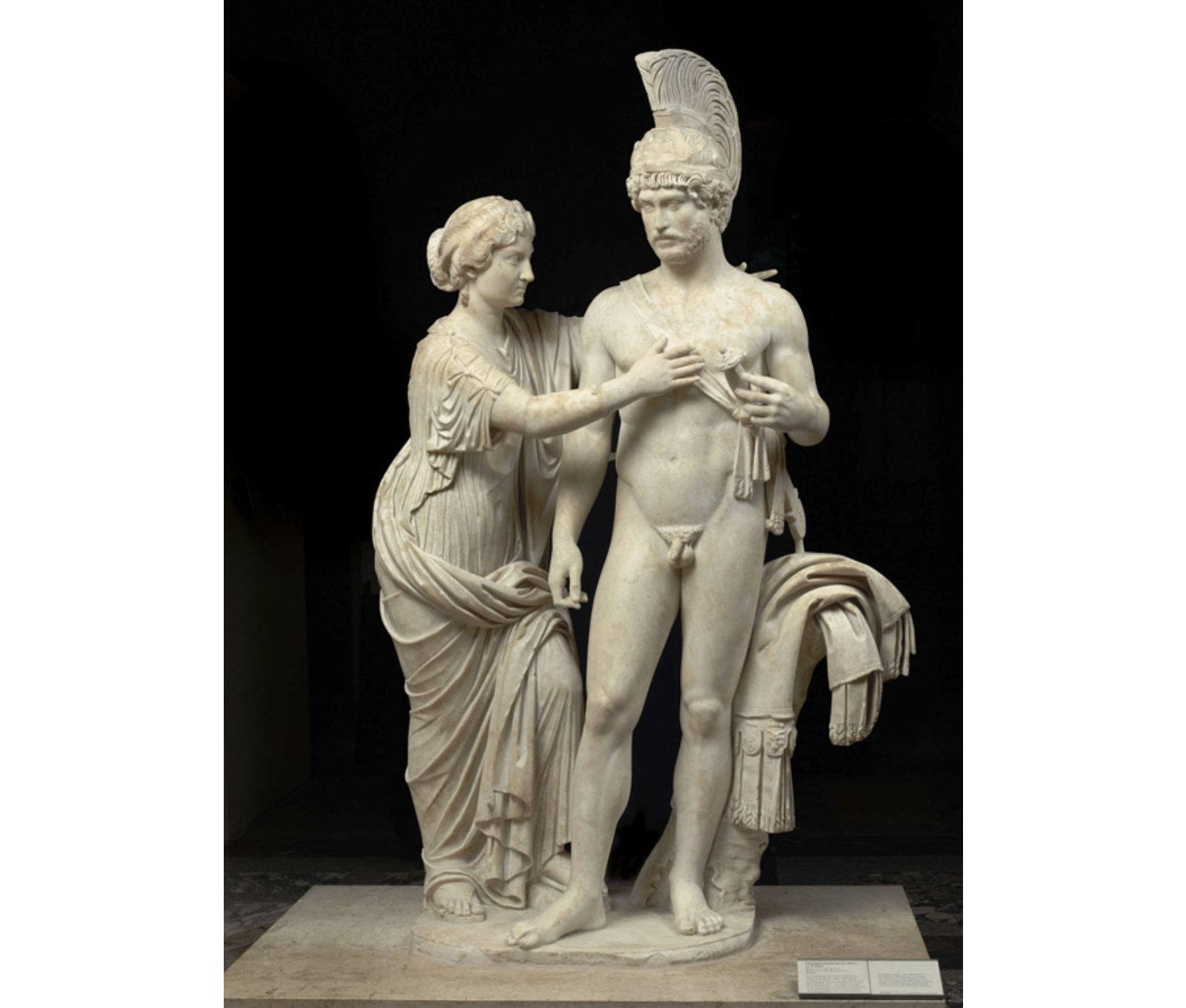
Mars with the face of the Roman Emperor Hadrian and Venus of Capua with the face changed at a later date to represent the Empress Lucille, wife of the Roman Emperor Lucius Verus. First created 120-140 CE modified 170-175 CE in Louvre, France.
With the advent of Christianity, the doctrine of original sin was developed. In the biblical creation story from the Old Testament, Adam and Eve ate from the tree of and were cast from Paradise. In their “sin,” they recognized and were ashamed of their nakedness. The nude body was no longer associated with innocence and idealism but instead was directly linked to sin and guilt through Eve, who tempted Adam to taste the forbidden apple and thus seduced the future of humankind.
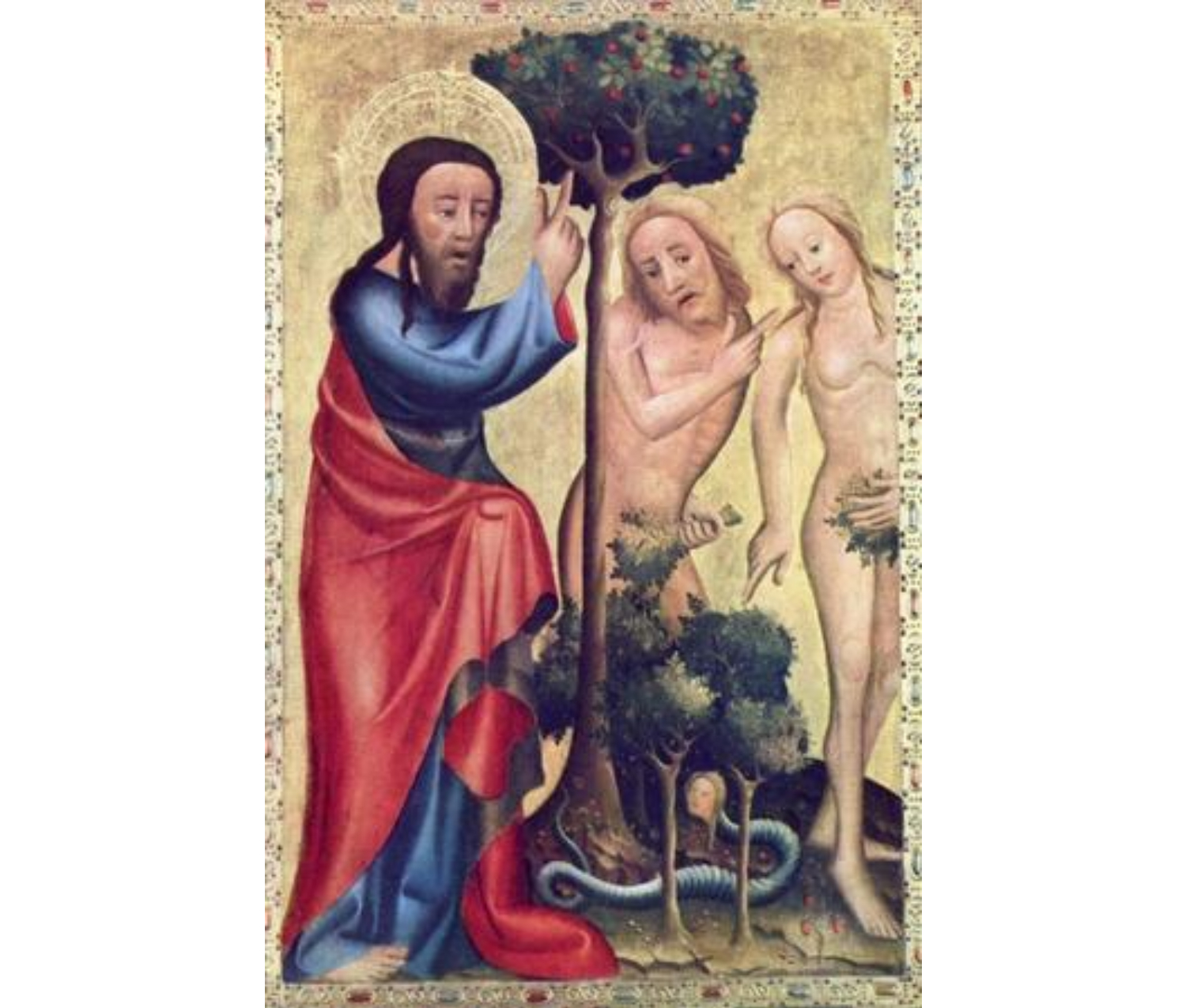
Meister Bertram von Minden (c 1340-1415) Adam and Eve, Temptation and Fall (kunsthalle Hamburg).
The French Academy
During the Renaissance, the classical Greek aesthetic was revived, and the nude again found a place in art. Academic French art of the eighteenth and early nineteenth centuries built upon Renaissance notions of the “idealized body.” In the French academy system, artists acquired their skill by studying classical examples and sketching from live models, in addition to studying anatomy, history, and mythology. This strict academic training was challenged by emerging avant-garde artists beginning in the mid-nineteenth century, as artists turned to realism, modernism, and the ground-breaking innovations of the Impressionists.
The Academy was also a strictly male environment, which limited opportunities for women to have a role let alone succeed as artists.
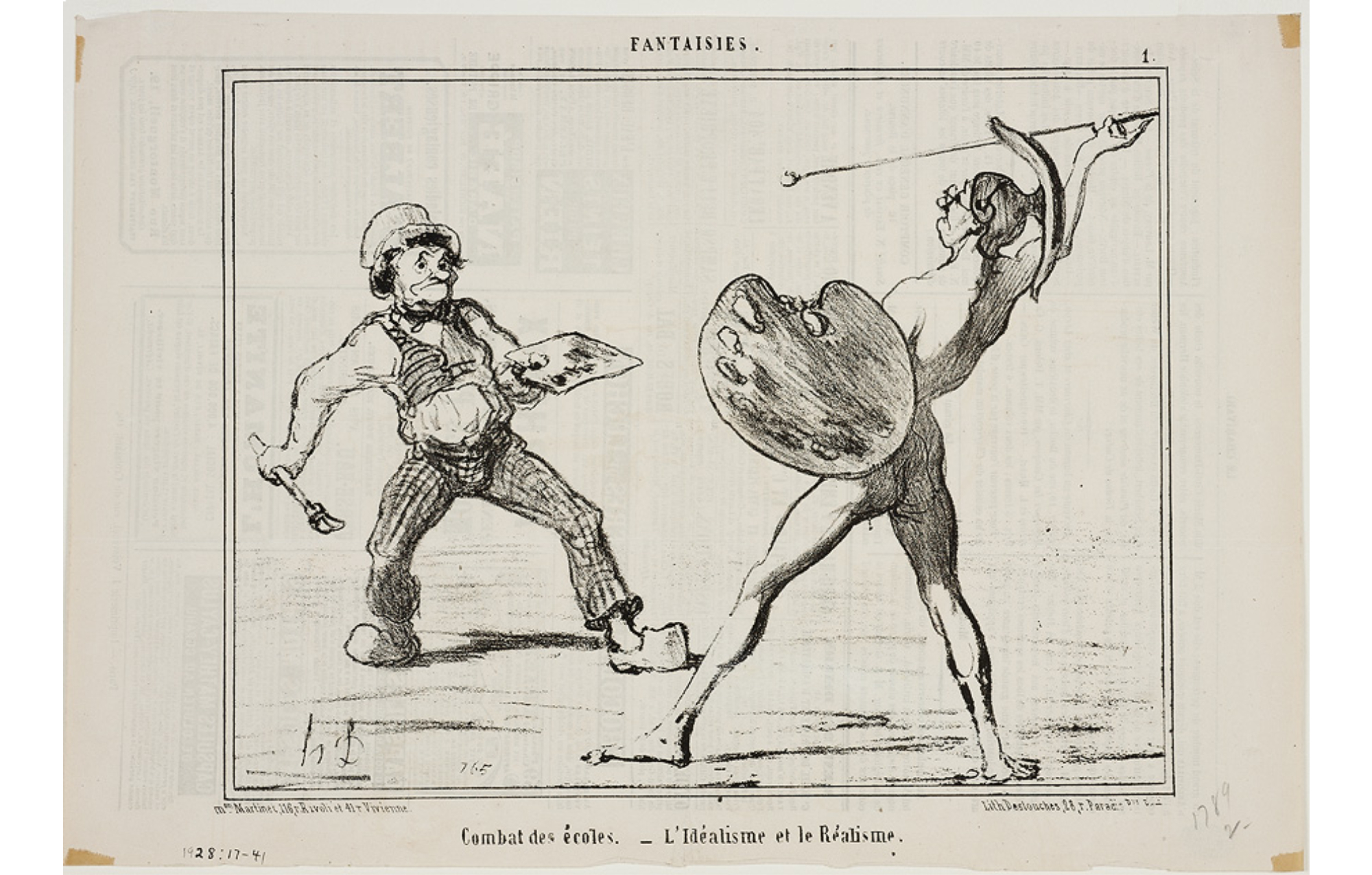
Honoré Victorin Daumier. French, 1808–1879. Fantaisies, No. 1. Combat des écoles – l’Idéalism et le Réalisme (Battle between the schools of Realism and Idealism). Published April 24, 1855. Lithograph printed in black on paper. Purchased. SC 1928.17.41.
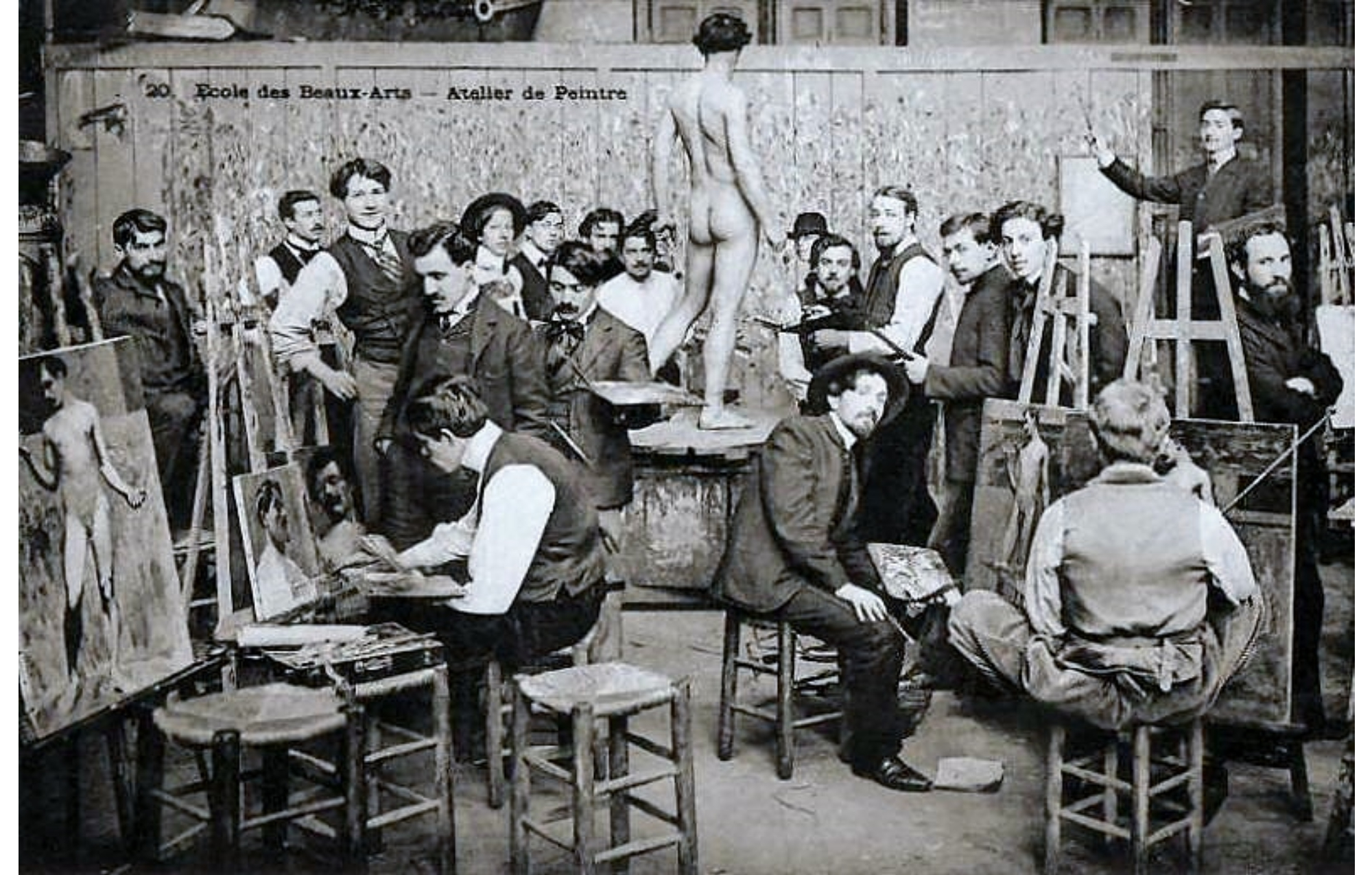
Male model posing at the École des Beaux-Arts in the 19th century.
Creating Moral Boundaries in the Visual Arts
In French academic art, female nudity was permissible within the context of an imaginary fantasy landscape or a mythical or biblical setting.
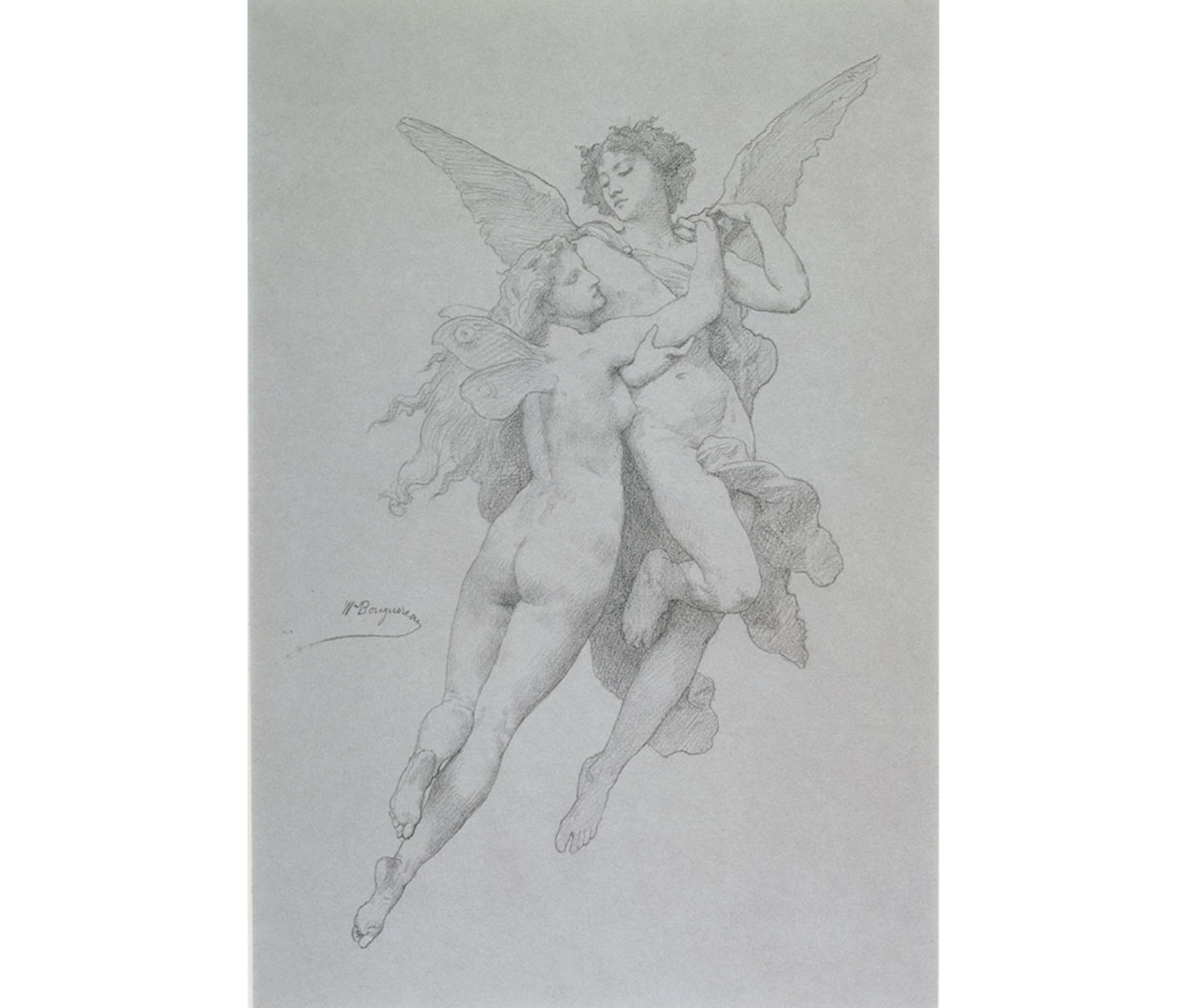
Unknown artist. After Adolphe William Bouguereau. French, 1825–1905. Cupid and Psyche. 19th century. Black chalk on paper. Purchased. SC 1967.1.
While the threshold between classical nudes and erotica was often crossed, the difference was a matter of adhering to certain rules that determined whether a female nude was an acceptable subject for art or instead an affront to the viewing public.
Story and setting were primary considerations: the nude figure was placed into a recognized narrative and usually identified with a character.
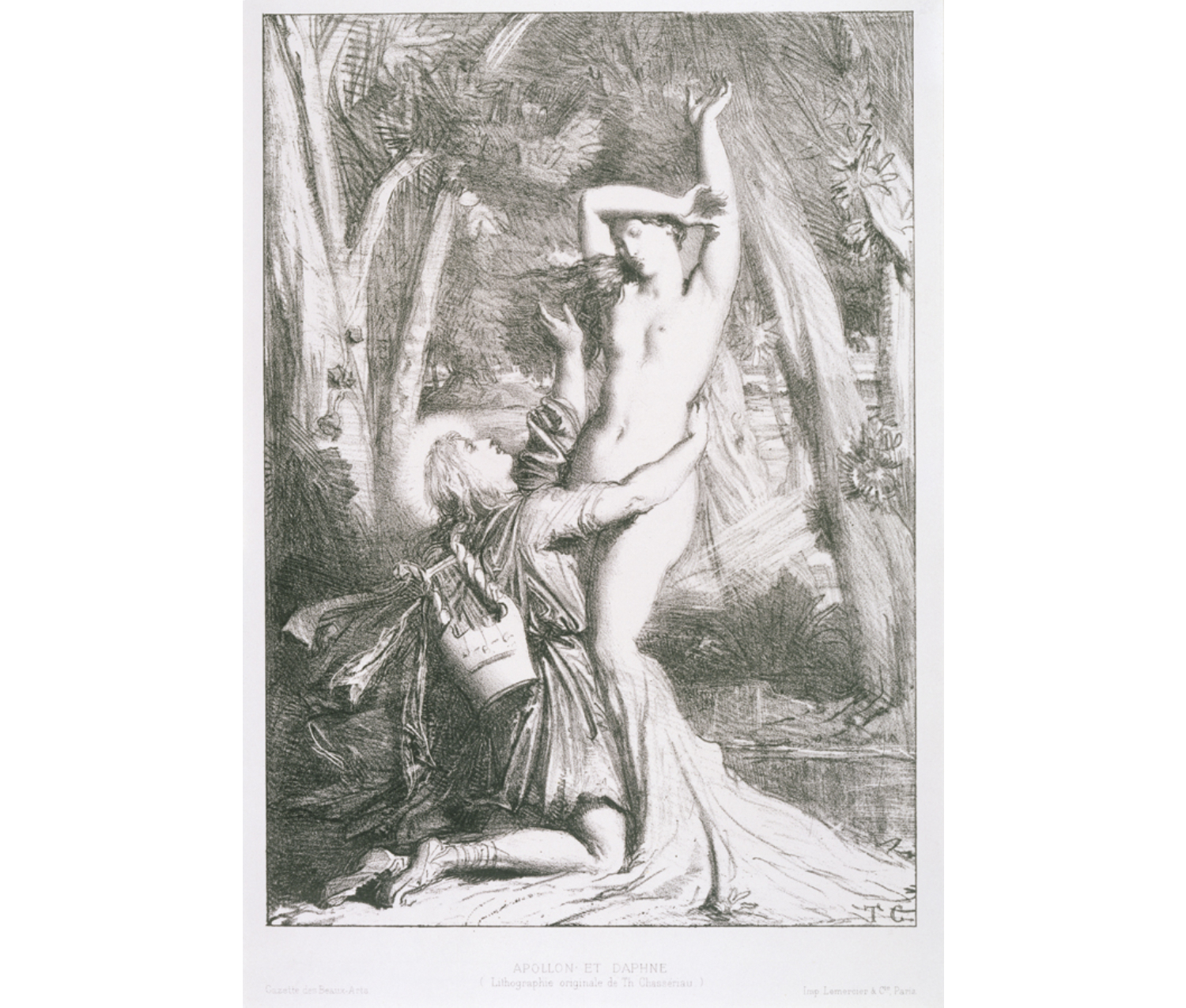
Théodore Chassériau. French, 1819–1856. Apollo et Daphne. n.d. Lithograph on paper. Purchased. SC 1930.1.3.
Female nudes were often shown with their eyes averted, or completely closed in sleep or dreaming (rendering them even more accessible to the male gaze). In addition, the naked female body was idealized and even infantilized, with soft undulating curves.
By turning her into a virginal, seductive but distancing bodily “landscape,” the model became an erotic illusion, one without will or personality, void of true emotion. Her passive state approximated that of a marble Greek statue.